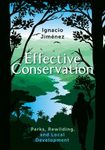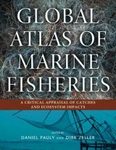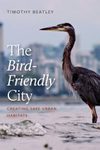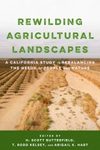By
Leon (NHBS Catalogue Editor)
19 Jan 2019
Written for Paperback

Science is fascinating but it has one problem. Scientists. Don’t get me wrong, I admire you all for your endless curiosity, dedication, and hard work. But you have to admit, most scientists are not very good at talking about their work. If we can bore our colleagues with our presentations, imagine what we do to more general audiences given half a chance! At a time when science is under attack more than ever before (Hello, Trump), and the stakes are higher than ever before (Hello, climate change), this is a problem. Enter Randy Olson, who abandoned a tenured professorship in marine biology and moved into Hollywood and film making. His plea to us all: “I love you very much, but, please, can you stop being
such scientists?”
Randy Olson passionately feels that what science lacks is storytelling. He wrote the first edition of this book in 2009. He revisited this idea in
Connection: Hollywood Storytelling Meets Critical Thinking. Then he wrote another book about it with
Houston, We Have a Narrative: Why Science Needs Story. And now he has revised
Don’t Be Such a Scientist. Because this mission is not over yet.
So what is wrong with the way we communicate science? A quick look at the chapter headings lays bare our faults according to Olson. We tend to be too cerebral, too literal-minded, and too unlikeable. To top it off, we are poor storytellers and poor listeners. The idea that we might be our own worst enemies might be a bit much to take in – but since when were scientists afraid of criticism?
The problem is that we scientists live in a sterile, clinical bubble of facts, facts, and more facts. They are our lifeblood and are vitally important. Lest you wonder, Olson is not advocating dumbing down your science, or twisting it to please an audience. But the problem is that if you don’t get your message across, someone else will, with the risk of the above happening to it.
So, when Olson talks of narrative and storytelling, what does that actually mean? Rather than structuring our presentations, our blogs, our op-eds etc. as an endless series of “and”, “and”, “and” stacking of factoids, what we need is narrative. It should come as no surprise when I say that man is a story-telling animal (see also
The Storytelling Animal: How Stories Make Us Human). Based on his experience in Hollywood, and the near-universal narrative structure known as the Hero’s Journey (see
The Writer’s Journey: Mythic Structure for Writers), Olson advocates the pattern of “and”, “but”, “therefore”. All is well and good. But then an unusual observation is made. Therefore our scientist has to undertake a journey to find out what is happening.
When this book was first published in 2009 it received quite some pushback from the science community. And I can see why. Olson is not afraid to openly name and shame. Whether it is America’s National Academy of Sciences whose effort to study the science of science communication he openly ridicules, or a famous climate scientist such as Michael Mann who is charged with not listening, despite fighting a solid cause (see his book
The Madhouse Effect), Olson is outspoken.
Another thing that might put scientists off is that Olson does not lay out a clearly structured and detailed plan for how to improve your science communication (that would be so cerebral). But that does not mean this book does not contain many gems.
Take, for example, his notion of the four organ theory for connecting with a mass audience. We scientists appeal to the head, the intellect. The reason we consistently lose out when trying to debate, say, creationists, is that the other party appeals to the heart and the gut. Or, as his chapter on literal-mindedness drives home: the facts do not speak for themselves. Simply putting them out there and then get upset when nobody seems to get the point, is, well, rather pointless. There is that intellectual bubble again: we live and work surrounded by peers who all praise rationality above all else. But most people do not. Facts don’t change minds, but stories do.
Another gem I spotted was the idea of accuracy versus boredom. Scientists value precision above all else in their communication (and in their profesional writing they should). But when talking to an audience, or when being interviewed, this often goes at the expense of stimulating your audience. Particularly interesting is the comparison between two climate change documentaries made by the same director. Where most of us will not have heard of
Too Hot Not to Handle, virtually everyone will have heard of Al Gore’s
An Inconvenient Truth. Yes, the latter was not 100% correct in every detail, but by and large it was, and, boy, did it get people talking.
If you read the first edition, this book contains an update to each chapter with further insights and a completely new chapter urging scientists to become better listeners. This will be especially useful if you are interviewed on TV or radio. Olson used it to great effect in his 2005 documentary
Flock of Dodos: The Evolution-Intelligent Design Circus.
The media landscape has changed and become super-saturated, our attention has become a valuable currency. But for all the wringing of hands and gnashing of teeth about this (see for example
The Shallows: How the Internet is Changing the Way we Think, Read and Remember) it is here to stay for now. So we either sink, swim or evolve really quickly. Some of the recommendations Olson gives will be unconventional for many scientists. Taking improv classes? Or acting lessons? Olson, meanwhile, continues to educate scientists through his Story Circles Narrative Training. Unconventional as all this might appear,
Don’t Be Such a Scientist comes highly recommended as it is chock-full of hard-won nuggets of wisdom and is (surprise, surprise!) an engaging read – it is the kind of book you will breeze through quickly. Yes, it is even entertaining. Most importantly, it holds up an irreverent mirror to ourselves. I challenge you to not occasionally cringe with a combined sense of embarrassment and recognition.






















![Catalogue of the Type Specimens of the Vascular Plants from Siberia and the Russian Far East Kept in the Herbarium of the Komarov Botanical Institute (LE), Volume 2 [Russian]](http://mediacdn.nhbs.com/jackets/jackets_resizer_medium/24/243114.jpg?height=150&width=107)











